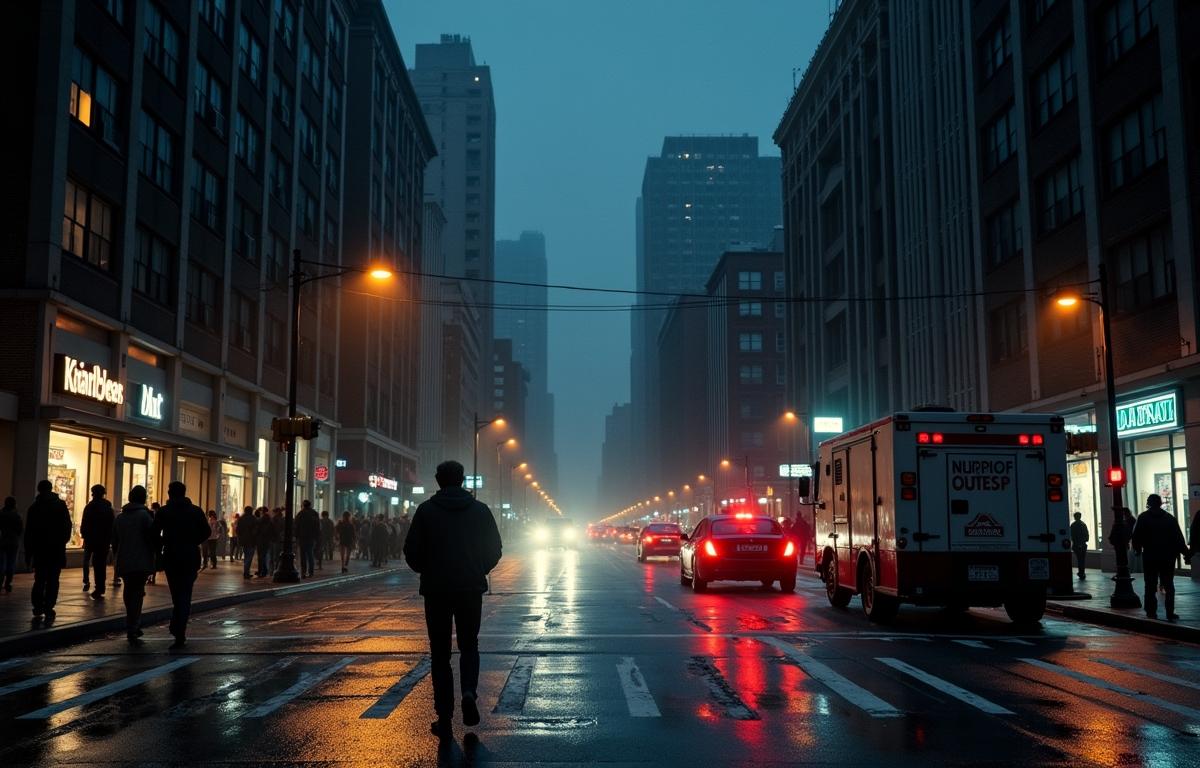Cities suffer extensive disruptions when power failures occur frequently, impacting daily life heavily. When the electricity cuts out, daily routines come to a screeching halt, and the ripple effects are felt across communities. Whether it’s the stress of missing urgent deadlines or the unexpected expenses of backup solutions, these episodes tend to pile up quickly. Many residents feel the pinch almost immediately, but fewer people realize just how deep these costs can run, especially in an urban environment where so many services depend on a stable flow of electricity.
Contents
How Frequent Power Failures Affect Economic Impact
Businesses of every size feel the strain when outages strike repeatedly. Cash registers, point-of-sale machines, and network systems all go offline. Inventory management takes a hit, leaving some merchants unable to track stock or complete sales in a timely manner. At times, business owners rush to install generator backups to maintain services, but that leads to higher operational costs and extra maintenance. While a single blackout might be manageable, recurring outages can erode consumer trust and push loyal customers elsewhere.
The chain reaction extends to large companies that rely on heavy machinery or extensive digital networks. Production lines must halt, employees stand idle, and data centers can face sudden shutdowns. Everyone scrambles to recover from these repeated interruptions. Over time, such setbacks spill over into higher product prices, because dealing with uncertain power conditions drains funds that could be spent on technology upgrades or new hiring. Maintaining a resilient operation in cities prone to unpredictable grid interruptions becomes a juggling act of constant preparedness.
The ripple effect on local startups
Startups and small ventures often operate on slim margins, so they feel even bigger shocks from power failures. When the supply is erratic, these new businesses struggle to deliver on their promises. Delays on small orders or software updates alter their reputation, sometimes before they’ve had a chance to establish credibility in a competitive city. The overhead of alternative power plans puts further stress on budgets. Some entrepreneurs even expand to neighboring areas with fewer outages, leaving the local scene weaker in their absence.
A strain on remote working
An unstable grid complicates the rising trend of people working from home. Poor connectivity disrupts videoconferences, halts file transfers, and forces postponements. Clinging to mobile data or hurrying to cafés with Wi-Fi becomes the norm for many, potentially decreasing productivity and morale. In places where remote working should bridge employment gaps, frequent power failures can widen them instead.
The Effects on Urban Infrastructure
Power outages can wreak havoc on roads, traffic signals, and the entire public transportation system. Imagine streets already congested by rush-hour traffic, now thrown into chaos as stoplights flicker off. This scenario leads to increased road accidents, frustration among drivers, and wasted fuel as vehicles linger in heavier jams. Over time, city dwellers come to anticipate these unpredictable disruptions, and trust in local authorities wanes.
Some neighborhoods rely on electric pumps for water distribution. When the electricity goes, so does the clean water supply. People might resort to alternative sources that cost more or don’t meet quality standards. Sudden surges on the grid, once power returns, can also harm vital electrical equipment used by hospitals, schools, and public institutions. Not only does this result in faster wear and tear on critical machinery, but it can also undermine essential services.
Pressure on power grid reliability
In cities with ballooning populations, the load on the electrical network is already enormous. Every time there’s an outage, the system is forced into a cycle of abrupt halts and sudden reactivations. Equipment that’s designed for steady conditions faces extra stress whenever this on-off pattern repeats. Repairs become frequent, and the costs of maintaining older equipment balloon. Ultimately, city administrations face a tough choice between upgrading the network or letting it limp along, hampered by persistent downtime.
Hidden impact on public safety
Streetlights going dark create fertile ground for petty crimes, vandalism, and heightened anxiety among residents. Even with police patrols, the absence of well-lit roads can leave people feeling unsafe. Emergency services face roadblocks while navigating neighborhoods enveloped in darkness, raising concerns about timely medical or security interventions. Each power cut erodes a bit more of the city’s sense of safety, leaving inhabitants uneasy and on edge.
Environmental Consequences of Recurring Outages
When municipal grids fail regularly, generators roar to life across the cityscape. While generator backups can ease the stress of an outage, they run on diesel or gasoline, increasing harmful emissions. Over time, these fuels contribute to local air pollution, putting pressure on public health systems. The combined effect of cars stuck in traffic and diesel fumes from backup generators can create smoggy conditions that linger in densely populated areas.
Residents might also turn to battery solutions to keep the lights on. These come with their own manufacturing footprints and recycling challenges. When multiple houses install home-based systems, the environmental advantages are not always straightforward unless paired with renewable energy sources. Meanwhile, the city’s overall consumption patterns shift unpredictably, complicating planning for greener solutions like solar or wind power. Incentives for sustainable solutions may emerge, but the immediate reliance on fuel-powered backups often undercuts long-term ecological goals.
Wasteful energy consumption spikes
Some households and businesses overcompensate after an outage. People aim to “catch up” on chores, or refuel devices that drained their batteries. This intense burst of energy demand can lead to power surges and more stress on the grid. It’s an ironic cycle: the city’s attempts to recover from a blackout can lead to further disruptions. Efficient resource management becomes challenging, and well-intentioned strategies to save energy can get buried under the scramble for immediate relief.
How Communities Adapt and Cope
Although repeated blackouts wear down morale, many communities find resourceful ways to stay functioning. Neighbors share their generator backups or pool together in co-living spaces equipped with solar panels. Immersive coworking setups arise in certain districts, offering reliable connections and shared amenities. While these shared efforts foster a spirit of innovation, they also highlight the gap in official infrastructure planning. Local collaboration addresses the symptoms, but a permanent fix requires robust power grid reliability.
Some residents take the leap into off-grid systems for part of their power needs. Solar rooftop installations can reduce dependence on the main supply, although the initial investment can be steep. Others focus on storing energy with battery solutions, hoping to avoid sudden blackouts altogether. Nonetheless, the unpredictability of frequent power failures lingers, forcing communities to allocate a big chunk of their budgets to staying lit.
Balancing city living with power challenges
Finding normalcy amid disruption is a balancing act. People switch to flexible work hours, taking advantage of times when the power is more stable. Businesses reevaluate their hours of operation, in sync with local outage patterns. These adaptations, while sensible in the short run, can take a toll on family life, social gatherings, and even nightlife in parts of the city. The sense of spontaneity that defines urban culture morphs into meticulous planning around an unreliable grid.
Looking at Sustainable Solutions
For long-term relief, policy changes and fresh investments in infrastructure must become a priority. Modernizing the grid with smart technologies can detect faults earlier and redistribute power more efficiently. Government incentives for solar energy, microgrids, and battery technology can offer a buffer during bad weather or peak demand. These efforts might take years to ripple through an entire city, but they can drastically reduce the need for stopgap measures like generators if done well.
Another essential piece is rigorous maintenance programs. Power lines, transformers, and substations require regular checks so small issues don’t snowball into major outages. Clear communication channels also help people plan around scheduled downtime, alleviating some of the economic damage. When authorities announce upgrade windows or preventive shutdowns in advance, businesses can organize their work. By taking these steps, city leaders can foster a culture of resilience and planning.
Innovative microgrid opportunities
Microgrid projects localized power grids that can operate independently are on the rise in various regions. These systems link a neighborhood, campus, or commercial cluster to distributed energy sources like solar panels and small wind turbines. In the event of a larger grid failure, a microgrid can switch to island mode and continue supplying electricity. Such setups reflect a long-term approach to dealing with frequent power failures, ensuring critical services remain operational. Whether it’s local grocery stores or essential medical facilities, microgrids can insulate communities from the worst consequences of a broken main grid.
Social Costs and Well-Being
Beyond the monetary and infrastructural toll, these disruptions can chip away at the social fabric. When night falls on a dark street, anxiety levels rise. Families may feel confined indoors, unable to enjoy community activities or even basic chores that require electricity. Over time, people become accustomed to ongoing caution, altering the city’s vibrant character. Moments once spent unwinding outdoors or supporting local events get replaced by hasty errands before the next outage hits.
Relationships also bear the weight of unpredictability. Gatherings might be cut short or postponed at the last moment. Household arguments flare up over resource usage or the best backup strategies. In more vulnerable communities, the psychological strain compounds existing hardships and contributes to feelings of isolation. When electricity returns, stress can linger. Frequent disruptions often leave behind broken appliances or incomplete tasks that need urgent attention.
Beyond Darkness: Moving Forward
In the quest for a more reliable urban environment, multiple solutions intersect. Infrastructure upgrades, community-level innovations, and policy-driven incentives all help address the root issues. Even lifestyle changes, like staggered work schedules and targeted energy usage, can ease strain on the system. The key lies in recognizing that repeated blackouts affect more than a few hours of downtime. They shape how cities evolve, how local businesses remain competitive, and how residents find comfort in their homes.
Ensuring a stable power supply might take time, but awareness sparks progress. Each conversation about modernization, each pilot project testing cleaner technologies, and each community initiative bridging gaps can shift urban centers toward consistent power. The coalescence of efforts from individuals, private companies, and government bodies propels cities away from the cycle of outages and emergency measures. Although these steps won’t fix everything overnight, they do set a path that leads beyond the constant fear of a sudden blackout looming around the corner.



